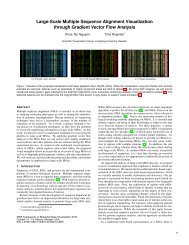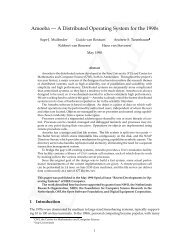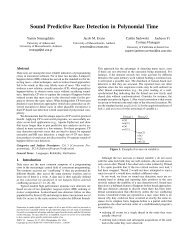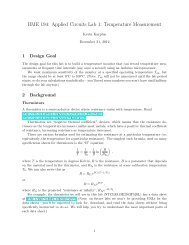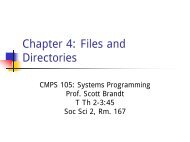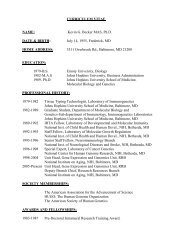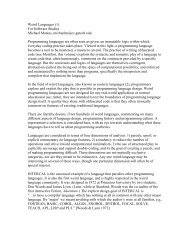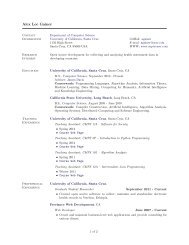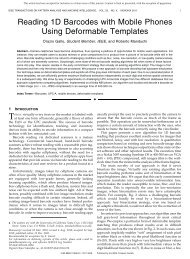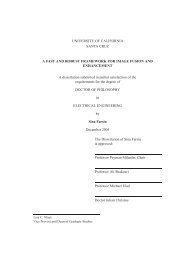Learning binary relations using weighted majority voting
Learning binary relations using weighted majority voting
Learning binary relations using weighted majority voting
You also want an ePaper? Increase the reach of your titles
YUMPU automatically turns print PDFs into web optimized ePapers that Google loves.
LEARNING BINARY RELATIONS 269<br />
mance (Theorem 3). Are there other applications where the clustering capability can be<br />
exploited? For the problem of learning <strong>binary</strong> <strong>relations</strong> the mistake bound of the poly-<br />
nomial algorithm (second algorithm) which uses (2) weights is still far away from the<br />
mistake bound of the exponential algorithm (first algorithm) which uses U'/k! weights.<br />
There seems to be a tradeoff between efficiency (number of weights) and the quality of<br />
the mistake bound. One of the most fascinating open problem regarding this research<br />
is the following: Is it possible to significantly improve our mistake bound (for either<br />
learning pure or non-pure <strong>relations</strong>) by <strong>using</strong> say O(n 3) weights? Or can one prove,<br />
based on some reasonable complexity theoretic or cryptographic assumptions, that no<br />
polynomial-time algorithm can perform significantly better than our second algorithm?<br />
Aeknowledgments<br />
We thank William Chen and David Helmbold for pointing out flaws in earlier versions<br />
of this paper. We also thank the anonymous referees for their comments.<br />
Appendix<br />
{ 67 n? n(n--1)<br />
We now demonstrate that the function f(6i, n~) = 6ini - -~ + -~ß lg ~~(n~-]) is con-<br />
cave for ni _> 2 and 6~




